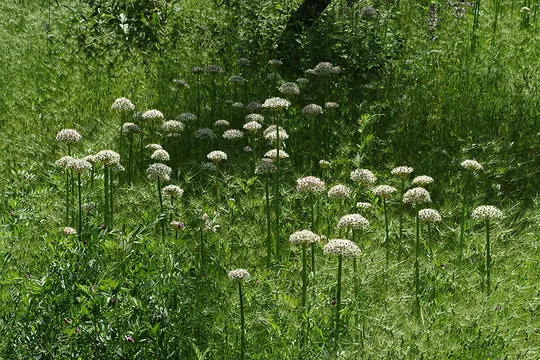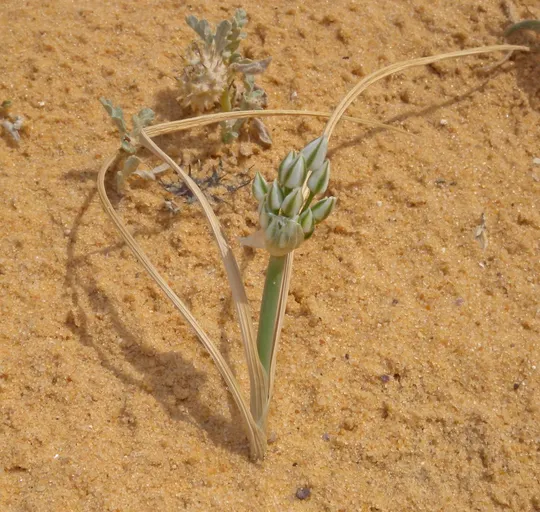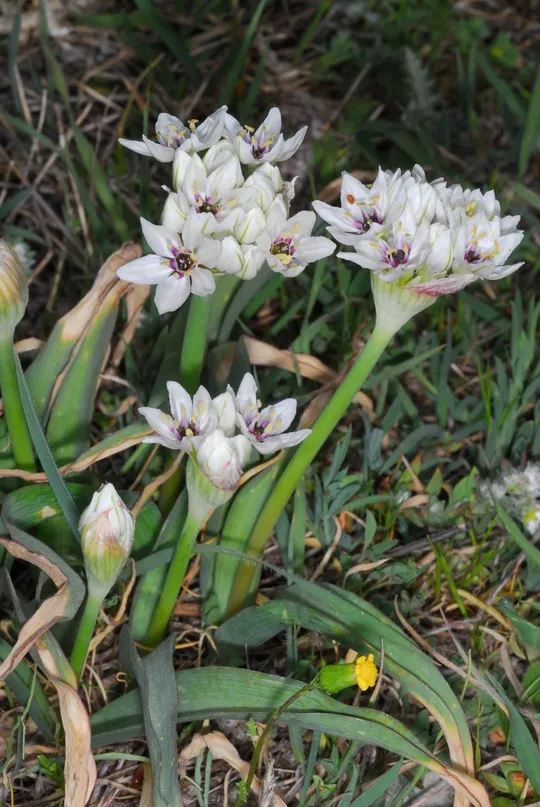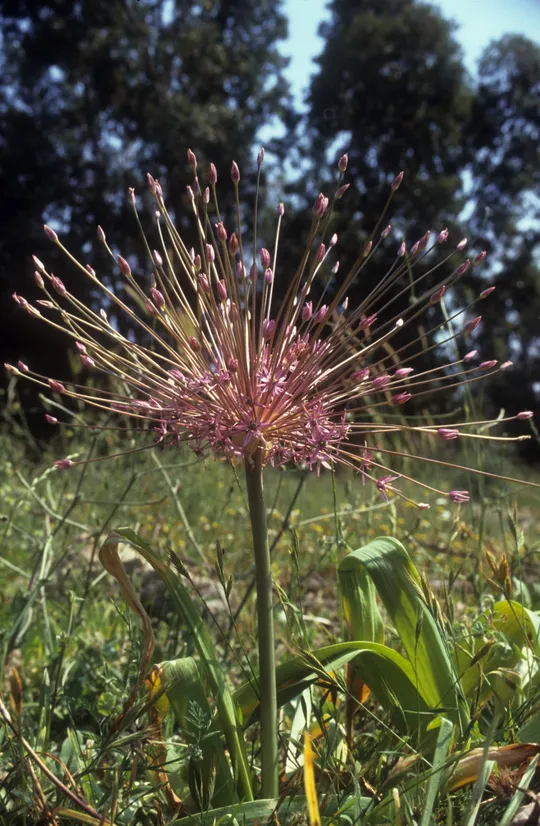Negev Garlic
Allium negevense

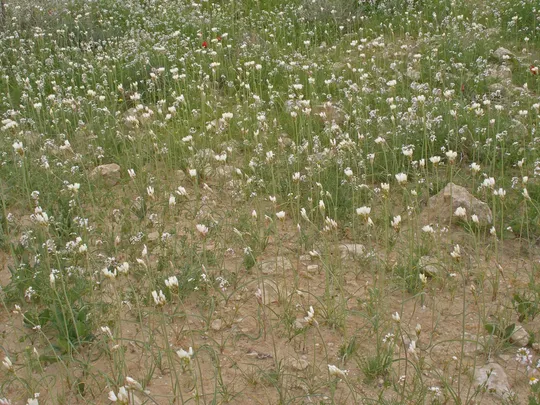

Allium negevense now grows in four regions: the Judean Desert, Northern Negev, Negev Highlands and the southern Negev. There are confirmed reports from 18 sites in Israel, but since it blooms only in rainy years it can be estimated that there are about 80 sites. In the Judean Desert it is found in the Arad area and in the lower sections of the Judean Desert towards the northern Dead Sea. In the northern Negev it was observed and collected from ten sites on the Yeruham Ridge, Halukim Ridge and around Sde Boker, En Ovdat and Ovdat; in the Negev Highlands it was collected on five sites in Wadi Nafha, Hemet Pit, Wadi Nitsana, Wadi Ramon and Arod Pass. Mimi Ron found A. negevense on Mount Gabriel as a new species for the southern Negev region. In 1941 Tuvia Kushnir collected a specimen from the Jordan Valley in the Jericho vicinity, but it is doubtful if the plant still grows at the site.
Loess plains and
rocky limestone slopes or chalk in moderately desert areas, together with Zygophyllum
dumosum, Artemisia sieberi and Chiliadenus iphionoides and rarely with
Bassia arabica and Suaeda asphaltica. Allium negevense grows in different plant associations than its related species A.
erdelii and A. qasyunense.
Allium
negevense belongs to the Molium section in the genus Allium
any type and it is very close and similar to A. qasyunense. This species replaces A. negevense
in the northern Negev and in the transition zone and differs from it by its shorter
perianth (5-7 mm long). Large A. qasyunense populations are known from the northern
Jordan Valley and the Golan Heights slopes. Recently new populations have also
been found on the calcareous sandstone hills in the Giv'at Brener area in Pleshet
(although no comprehensive comparison was done between these plants and the
other populations). A. erdelii is another similar species in the
same section. It is relatively shorter than the two other species, with leaves hairy
on both sides and ciliates leaf margins, which is characteristic of the coastal
plain and the transition zone. A. qasyunense and A.
erdelii rarely appear together
(Coleman, 1985). The vegetative reproduction of the three species should be
studied, as the manner of vegetative propagation is important for the
identification of Allium species. In the desert most of the buds developing
at the base of the bulb are exposed due to desiccation of the outer bulb coats
and become independent bulbets. Ecological and molecular study of these three
species along the arid gradient in Israel will contribute to understanding the
evolution of Allium species in the Molium section and other geophytes
that grown under these conditions and may change their taxonomic status.
·
Allium negevense is known today in four of the five regions from which it had been
collected or observed. The number of sites in these regions is probably stable,
but due to the great inter-annual differences in the number of blooming plants,
there is no accurate estimate of the number of sites.
·
The populations
are usually large, numbering hundreds to thousands of plants.
·
The A.
negevense populations are threatened by military
operations in the Negev and by agricultural development (e.g. Sde Tsin).
·
The Negev
Highlands population in the Mount Ramon and the Makhtesh Ramon regions are
protected in nature reserves. The A. negevense concentrations on the Halukim Ridge and the Yeruham Ridge are not
located in nature reserves.
·
A. negevense
is endemic to Israel and its local threat status is equivalent to its global
one.
Field surveys should be conducted in rainy years in desert regions to obtain a more reliable picture regarding the number of Allium negevense sites as a basis for conservation and management policies. A. negevense is easy to cultivate and backup collections should be created in refuge gardens.
Allium negevense is endemic to
the Negev and the Judean Desert.
Allium negevense is a rare desert geophyte, whose number of sites is not
clear because of the great inter-annual variability in the number of flowering
plants. It is endemic to Israel, which weighs heavily in its favor for being
declared an endangered species.
קולמן, פ. 1985. הסוג שום בישראל. רתם 15: עמ' 39.
Current Occupancy Map
| 1000 squre meter pixel | 5000 squre meter pixel | 10000 squre meter pixel | |
|---|---|---|---|
| number of observations | 0 | 0 | 0 |
| in total pixels | 0 | 0 | 0 |
| Family | Liliaceae |
| Classification | On the endangered species list |
| Ecosystem | Desert |
| Chorotype | Eastern Saharo - Arab |
| Conservation Site | Halukim Ridge |
| Rarity |
1
1
6
|
|---|---|
| Vulnerability |
0
0
4
|
| Attractiveness |
0
1
4
|
| Endemism |
0
4
4
|
| Red number |
1
3.2
10
|
| Peripherality | 0 |
| IUCN category | DD EW EX LC CR EN VU NT |
| Threat Definition according to the red book | Vulnerable |
 Based on:
Based on:
